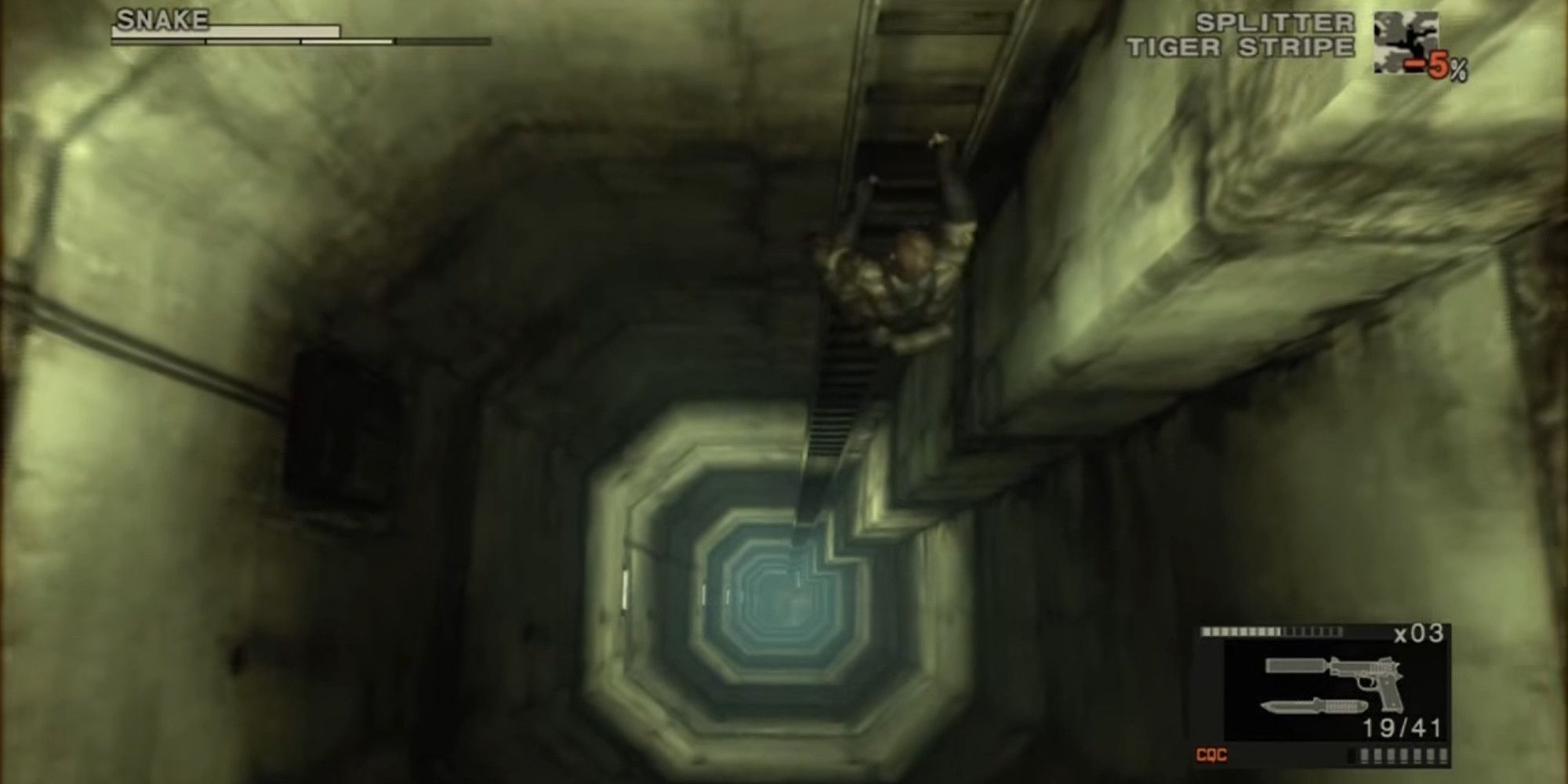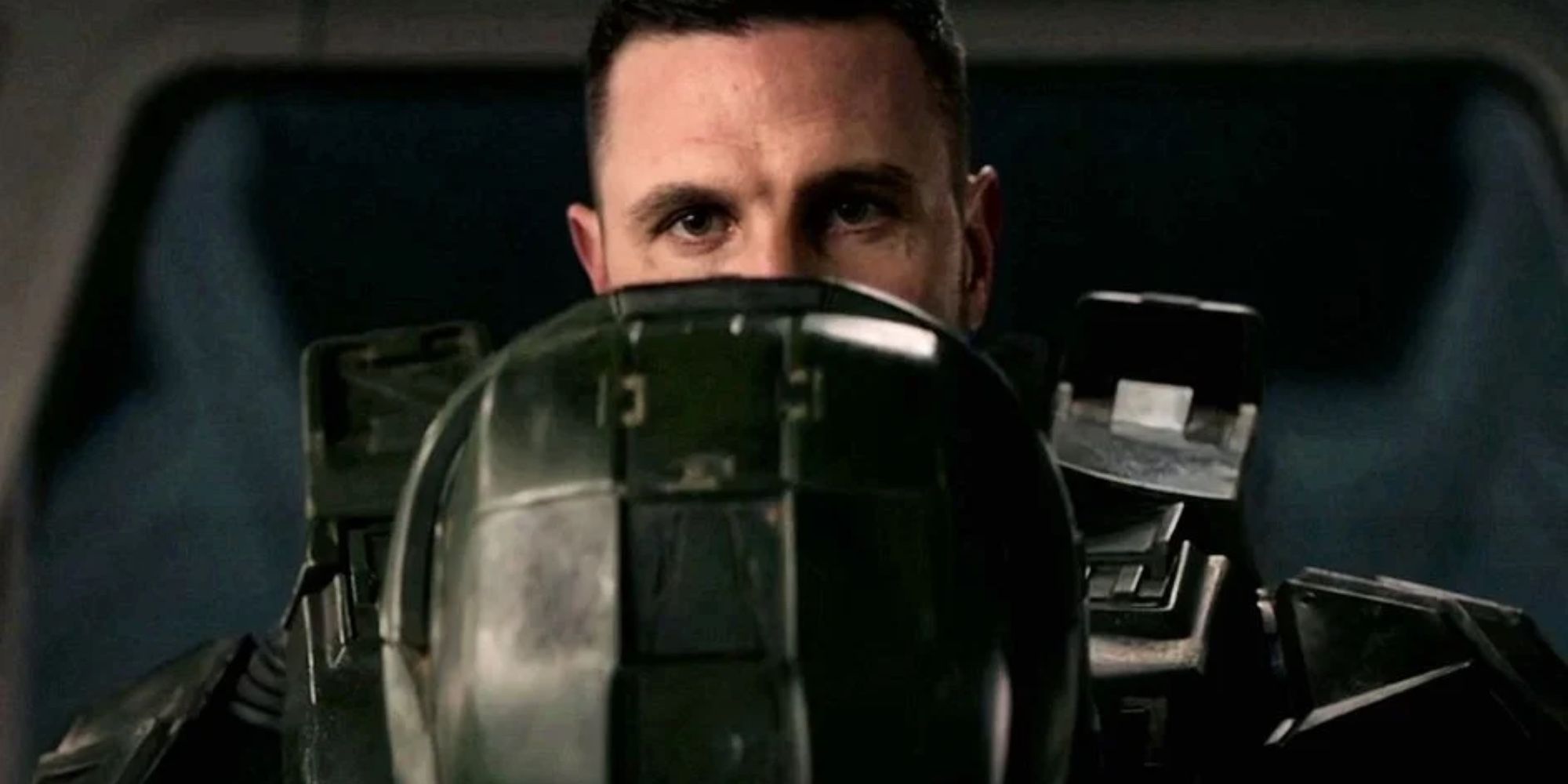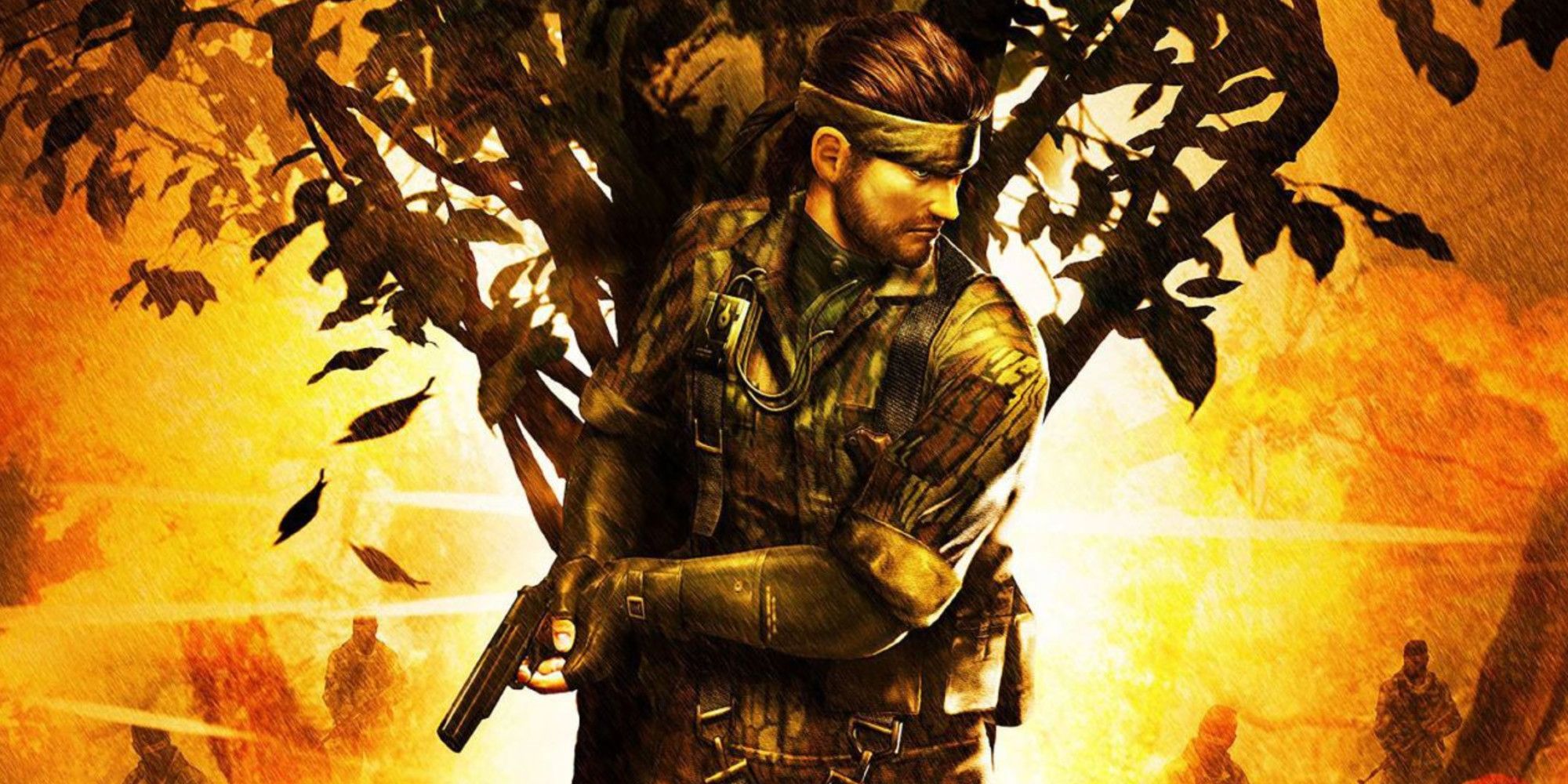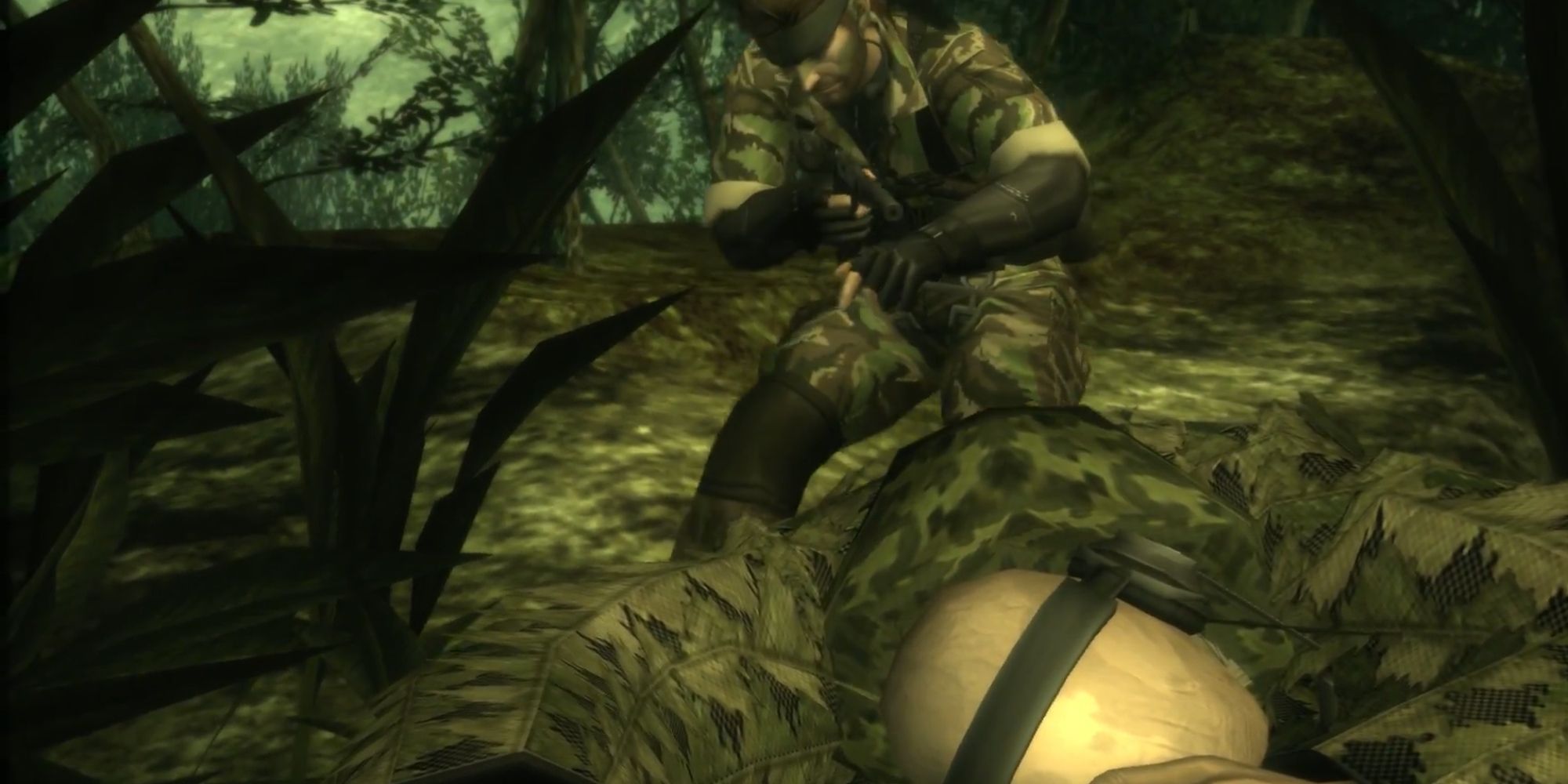These days, a lot of video games want to be movies, but they seem to do so without reverence for the power movies have. Film is a more legitimate art form, at least in the eyes of wider cultural critics, the New York Times, and the developer’s parents, and so this feels like the reason movies are in. If you make a game that somebody compares to a movie, they are essentially telling you it is less like a toy and more like a genuine work of art. But movies do not exist to be grown-up video games, and few developers seem to understand this. One soul who does, however, is Hideo Kojima. This is a man who claims “70 percent of my body is made of movies,” and he has been showing due reverence to filmmaking way before it was cool. The ladder scene in Metal Gear Solid 3 is one of the best examples of this.
Video games have always held that their greatest selling point is ‘immersion’. In a way, that makes perfect sense - unlike films, or indeed any art form, you are physically controlling the character. While there are some limits based on what the game allows for, the character essentially bends to your whim. You are them, and that’s a unique strength games have. But in terms of immersion, it’s also a little bit of a cop-out, and doesn’t always hold up. For example, many of you playing Elden Ring will find yourself dying to the same boss again and again and again - this might make for a fun and rewarding game as you git gudder, but it’s not exactly how the story of your legend is supposed to go. Likewise, many games suffer from ludonarrative dissonance where the cutscenes and narrative show the character to be one way, while the gameplay that allows you to murder at will shows them to be another way entirely.
The recent Halo TV show is an interesting case study for this. In the games, all gameplay is shown through a first-person perspective, while the character keeps the helmet on during cutscenes. The idea is that Master Chief is anyone. He’s you. This doesn’t quite hold up - he clearly has a masculine voice and brief glimpses of him under the helmet show him to be white - but the idea is there. You are immersed because you see through his eyes. The show took the helmet off almost immediately, and when I asked Master Chief actor Pablo Schreiber about why, he spoke about how immersion is very different in video games, and how television is a visual medium. It’s a version of an answer almost everyone involved in the show has repeated at some point, and it highlights the differences between gaming and film (or in this case, television).
An uncharitable reading of Schreiber et al’s answers might view it as disdain for video games. Video games, after all, are just as reliant on visual stimuli as film or TV, and since everything is built on computers, these visuals are much harder to create. You could also interpret the answer as claiming immersion is easier in video games, maybe even a given, because they can just plop you directly into the avatar’s eyeballs and call it a day. Personally, I think the helmet coming off so early and so easily highlights this, if not disdain, then lack of reverence for what players hold dear. But I also see the point that it may be necessary. Ultimately, even as movies and television begin to look to video games as they do to novels (as source material to adapt), and as games continue to hold being compared to a movie as the highest praise their parents- sorry, the critics - can give them, it feels the two mediums still do not understand what makes the other tick. Enter Kojima, and Metal Gear Solid 3’s ladder scene.
Recently, a speedrunner discovered a way to skip the entire ladder sequence. If you’re too busy flossing to Addison Rae on TikTok while you tell your homies no cap and chow down on a Tide Pod to have played Metal Gear Solid 3, this ladder sequence is a legendary part of the game. It is three whole minutes of climbing a ladder. Like, that’s it. The theme song plays and you climb a ladder. One step at a time, you climb. I have no issues with speedrunners skipping it - as I’ve written about before, I love watching speedrunners find new ways to break open games. But for regular players, this might be the closest a video game has ever gotten to a movie.
Forget your cinematics, your immersion, your award-chasing sad dad tears. This is, in the words of that Martin Scorcese meme about Morbius, ‘absolute cinema’. This is Kojima telling you to watch, breathe, prepare. Nothing happens in this sequence, no gunfights, no car chases, not even exposition. It’s just the theme song. And when was the last time you remember a video game having a theme song? Not an iconic bit of music, but an entire song you are forced to listen to from start to finish with nothing else happening besides footsteps on a ladder? It’s too easy to label every weird (and often stupid) thing Kojima does as genius just because of the stature of the man. Obvious product placement for an energy drink? What a genius subversion of the commodification of our medium! Definitely not just a good way to make easy money for his start-up company developing a hugely expensive video game!
The ladder sequence, however, does feel like genius. Perhaps not quite as memorable as having your memory card read during a boss battle, but one of the many quirks of Kojima’s work that shows his perfect understanding of how video games and movies differ, but also how they share deep similarities. In the ladder scene, we are not supposed to be immersed, at least not in the classic video game sense. We are not supposed to imagine it is us climbing up that ladder, not supposed to feel the rough metal of each rung. We are supposed to be absorbed by the very feeling of the game, to soak in the atmosphere through the drab visuals, the monotonous gameplay, and the rousing music. This is the game before the storm, and there will be dark times ahead. But in all of that, there is hope.
There is no gameplay of note in the ladder sequence, and so it seems strange that a video game would dedicate such a huge amount of time to something with no game to speak of, as well as no cutscene to fill in the gaps between all the shooty shooty bang bang. This is neither story nor gameplay. It’s both, in a unique marriage nothing before or since has ever quite managed. If you’re speedrunning, I’ll let you off. Otherwise, it’s a crime to skip the ladder section.




